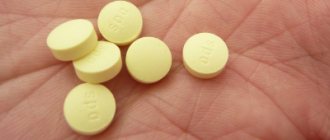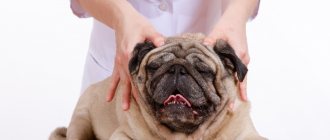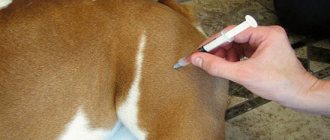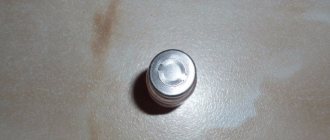Dogs do not always please their owners with impeccable health and well-being. Sometimes they get sick and then they have to be given medicine, so let's talk about how to give an injection to a dog. Most often, dogs of artificially bred breeds get sick, especially those for whose beauty the breeders neglected the health of the livestock: boxers, pugs, French and English bulldogs, sharpeis, basset hounds, dachshunds, bull terriers.
Even the once healthiest breeds - German and Central Asian shepherds, St. Bernards, Neapolitan mastiffs - began to get sick much more often. Because modern show breeding does not involve working tests and thorough health checks of the breeding stock.
What do you need to know before giving your dog an injection?
Regular injection syringes are suitable for dogs. The volume is selected depending on the amount of the prescribed drug. Insulin syringes have the thinnest needle, but their maximum volume is 1 ml. These syringes can be useful for puppies or miniature dogs. In other cases, syringes with a volume of 2 ml or more are used.
The dog's skin is not treated with anything before the injection. The syringe itself must be sterile and used once. You should not use the same syringe repeatedly, even if the drug remains.
As a rule, you can give a one-time injection yourself. But, if a course of treatment is prescribed and it is decided to carry out injections at home, it is better to have an assistant who will help with fixation.
It is important to strictly follow the dosage and frequency of use prescribed by your doctor. You should not skip injections, this will affect the outcome of your recovery. .
How to properly prepare an injection
The next step is to prepare the syringe.
- The owner thoroughly disinfects his hands with soap.
- Pick up the ampoule and carefully read the instructions again. Compare what is written with the doctor’s dosage.
- Wipe the ampoule and hands with an alcohol-containing solution.
- Cut the packaging and open it. Do not leave glass near your dog; he can easily put it in his mouth and chew it.
- Open the package with Spitz and take the required amount of solution.
- Turn the syringe over with the needle facing up and tap it. Make sure the liquid is evenly distributed inside.
- Start moving the dispenser slowly so that the air comes out.
Read 10 symptoms of allergies in dogs and effective ways to treat the disease
Important! Experts who make injections for dogs recommend using the liquid drawn up into a syringe within 5 minutes. Otherwise, the solution will gradually begin to lose its beneficial properties.
How to give an intramuscular injection to a dog?
Intramuscular injections are always more painful than subcutaneous injections. The drug must be injected directly into the thickness of the muscle tissue. In dogs, the hip area of the hind limb is suitable for this.
The volume of medication administered intramuscularly should not exceed 5 ml. If more is prescribed, it should be divided into two injections and given to two different limbs. The needle is inserted with a quick, confident movement. The drug is administered slowly.
The dog is placed on its side. An assistant holds the animal by the head and front paws. The person who will give the injection holds the back paw with his left hand and inserts the syringe with his right hand. If the dog is large, the injection can be given while the pet is standing. But the assistant must hold the animal by the collar to avoid injury during the injection. The needle is inserted into the muscle (you need to feel the softest place) perpendicular to the surface. The depth of administration depends on the size of the dog.
How to give a dog a subcutaneous injection?
Subcutaneous injections are given to the dog in the area between the shoulder blades. The volume administered can be quite large; in some cases, even subcutaneous infusions are prescribed. Then solutions of 50-100 ml are injected subcutaneously.
The dog is secured sitting or lying on its stomach (back up). An assistant holds the front of the body - either by the collar or by the head with one hand, and massages the armpit area with the other - this will slightly distract the dog from the injection. The one who makes the injection pulls back the skin on the withers (between the shoulder blades) with his left hand, and with his right hand inserts the needle into a fold of skin parallel to the pet’s spine. As soon as the syringe feels like it has pierced the skin, the medicine can be injected.
If the animal is furry, the needle can be inserted into the fur by mistake and all the medicine can be poured out. Therefore, you can first try to administer a test dose and, if you can see that the fur around is dry and nothing is flowing anywhere, then the skin has been pierced and you can safely inject the remaining medication.
Subcutaneous administration of medication
A subcutaneous injection is most often given at the withers. This is the area on a dog's body where the shoulder blades of the front legs meet. The location has many advantages: it is impossible to hit large blood vessels and nerves here. This minimizes the likelihood of injury to the animal. In general, subcutaneous administration of small doses is possible on any area of the skin where the skin can be pulled back. The disadvantage of this method is that the active substances are absorbed for a relatively long time during this administration and slowly enter the bloodstream. Therefore, in emergency cases, subcutaneous injections are not very effective.
This is interesting! To divert attention from the pain, during the subcutaneous injection, the person helping to hold the dog should grasp the fold of the dog's armpit with two fingers.
The injection site is first disinfected. The skin on the withers is gathered into a “house” and a needle is inserted in the direction of the spine, closer to the base of the formed fold, at an angle of 90° to it. When done correctly, the needle seems to fall through, and the liquid flows freely from the syringe.
Proper skin grip
Attention! For all injections, the syringe is pulled out at the same angle at which it was injected. Sterile cotton wool is applied to the puncture site on the skin and pressed lightly.
Video - Hypodermic injection for a dog
How to give a dog an injection in the thigh?
To give your dog an intramuscular injection, you can follow this plan:
- prepare everything you need - draw medicine into syringes, prepare a muzzle (if the dog is aggressive);
- the dog is placed in a comfortable position (standing, lying or sitting);
- the assistant fixes the dog’s head and front paws;
- the one who gives the injection removes the cap from the needle and inserts the syringe into the thigh (preferably from the side);
- the medicine is administered slowly;
- the needle is removed from the muscle;
- The injection site can be lightly massaged;
- the dog is rewarded, the syringes are disposed of.
The paw must be held so as not to break off the needle if the dog twitches. It is better to insert the syringe into the muscle from the side - this way there is less risk of damaging the sciatic nerve.
Syringe kit rules
To understand how to correctly draw a syringe, consider a small algorithm:
- wash your hands thoroughly;
- wipe the ampoule with an alcohol-containing solution (before doing this, you need to read the name of the drug and the dosage on the ampoule so as not to introduce another medicine by mistake, also read the instructions carefully - you may need to shake it);
- file the thinnest part of the ampoule (some preparations have a ready-made sawed “neck”) and break it;
- take a new syringe and, without touching the needle with your hands, draw up the drug sterilely;
- expel the air from the syringe with a piston;
- Collect the remaining bubbles by lightly tapping under the base of the needle and squeeze out with a gentle movement of the piston.
IMPORTANT!
- do not use drugs from open ampoules;
- do not use previously opened syringes and needles;
- Under no circumstances should you put the drug into a syringe in front of an animal - this may affect the emotional state, which will lead to problems with the manipulation.
To save money, you can draw several doses of the drug into a syringe, inject one dose, and store it in the refrigerator. Warm it in your hand before use.
How to give an injection to a dog at the withers?
Scheme of action for subcutaneous injections in a dog:
- prepare syringes with medications;
- the dog is placed in a comfortable position (lying, sitting or standing);
- the assistant holds the pet and calms it down, stroking it behind the ear or in the armpit area;
- the one who will give the injection pulls back the skin on the withers with his left hand so that a fold forms (in the hand);
- with your right hand, insert the needle into the skin at an angle of 20 degrees (almost parallel to the dog’s spine);
- the entire volume of the drug is administered;
- the syringe is removed and disposed of;
- a slight swelling may occur at the injection site - this is a drug that will gradually dissolve;
- the dog is encouraged.
A side effect of subcutaneous injections is sometimes an abscess. If the swelling at the injection site does not decrease, persists for a long time and causes discomfort to the dog, you should consult a doctor for an examination.
Complications
Failure to comply with the rules for carrying out such manipulations is fraught with complications. Moreover, they happen even to people with experience.
Lameness
The dog may experience lameness. Typically, the complication manifests itself after painful injections, during which the animal even whines or breaks out. A nerve may also be affected.
If lameness does not go away for a long time, you should consult a doctor
To improve the condition, the injection site is gently massaged several times a day with rubbing movements clockwise and in the opposite direction. If a lump pops up at the injection site or the condition has not returned to normal after two days, the help of a doctor is needed.
Formation of infiltrate
In the tissues where the injection was administered, an infiltrate sometimes forms, that is, cellular elements mixed with blood and lymph, and sometimes pus, accumulate in this area.
Errors that cause this phenomenon:
- infusion of the drug into the same place on the animal’s body;
- ignoring the norms of asepsis and antisepsis;
- improper removal of the needle when working with irritating compounds;
- infusion of an irritating drug under the skin or into connective tissue;
- the use of cold preparations, especially suspensions, as well as oily solutions, biological drugs.
To avoid such a complication, it is necessary to constantly change the location of the infusions, and not to inject irritating agents under the skin. Before use, the compositions are heated, especially oil ones, to avoid vasospasm and speed up the resorption of the solution. The infiltrate is resolved by iodine mesh or heat.
An iodine grid will help
Attention! You should not heat the damaged area if the swelling becomes larger and itches. This is a reason to contact a veterinarian.
Abscess
With this complication, a cavity forms in the skin where pus accumulates. The development of phlegmon, a purulent-diffuse inflammation, is also likely.
Subcutaneous abscess in a dog
With purulent inflammation, the temperature locally rises, the size of the swelling increases, and at the first stage it thickens. At the end of its formation, the formation softens in the center or in several places. When touching the abscess, the dog feels pain. The pet may develop a fever and refuse to feed. All sorts of digestive upsets and dehydration can occur.
Different syringes are used for different medications
The main reasons for the complication are the same - violation of aseptic and antiseptic standards, as well as infusion of medicine into loose tissue. To prevent an abscess, you should:
- use a new syringe for each product;
- use medications from ampoules that are opened immediately before use;
- treat the injection site with alcohol for intravenous, intraarterial, intraosseous administration.
At the initial stage, the abscess is treated with short novocaine blockades, and other options of physiotherapy are resorted to. In the final stages, surgical methods are used to clean the abscess cavity from pus.
Reference. A short novocaine blockade is an anesthesia in which the medicine is administered around the inflamed area.
Tissue necrosis
This is a process in which destruction and death of tissue occurs, accompanied by the formation of blisters and ulcerations. The dog feels pain at the injection site, swelling and bluish skin develops.
Necrosis often occurs after improper administration of irritating substances. To prevent this, the patency of the catheters through which drugs are administered should be checked.
If, during intravenous administration, the drug spills under the skin, then they try to draw out the solution with a syringe, and inject the affected area with novocaine. An effective measure is applying a cold compress.
How to set up your pet for an injection?
Injections, especially intramuscular ones, are stressful for a dog. Many pets remember these unpleasant sensations and hide or behave aggressively when they see a syringe. Therefore, it is important to try to reduce the stress of these procedures as much as possible.
- Take medications in advance so that the dog does not see it. It is important that the syringe with the drug is completely ready before administration. All air bubbles are deflated, the suspension is shaken (so that the powder does not settle on the handle of the syringe). If the medicine has been stored in the refrigerator, you should hold the syringe in your hand to warm it to room temperature.
- You need to approach the dog calmly and confidently. The assistant should calm the pet by stroking it. The dog must be secured securely so that during the injection the dog does not jerk and break the needle. The injection is given confidently and sharply in order to complete the administration of the drug as quickly as possible. After the injection, the dog should be rewarded with a game or treat.
- If the dog behaves aggressively, it is better to use a muzzle or tie a special bandage around the muzzle. This will reduce the risk of injury to both the owner and the pet. But after the procedure, it is also important to calm the pet and treat it with something.
Preparing the dog
First, the animal is calmed down by stroking and calm conversation. It is best to carry out the procedure after a walk and feeding, when the dog is in the most relaxed state.
Attention! The instructions for some drugs put forward conditions regarding the time of day or condition, food intake, so you should first carefully study the instructions and consult with your doctor.
Some dogs tolerate the procedure well, while others do not. Owners of restless animals need to ask their loved ones for help to hold their dog. This must be a person she knows. The assistant is located at the animal's head and strokes its chest and sides so as to prevent jerking. Rude behavior is unacceptable, as fear will make intramuscular injection difficult.
To prevent the dog from biting the owner and his assistant, it is recommended to use a muzzle. If there is no accessory, then the mouth is fixed with a bandage or other available means.
What you should know about dog injections
If you suspect your dog is sick, do not rush to self-medicate. The pet must be shown to a veterinarian, who, after examination, will make a conclusion about the necessary treatment. The first diseases are easily treated with tablets, the second with injections. The treatment is not limited to a single injection; the procedure is supposed to be daily and repeated. It is not always convenient to take your dog to a veterinary clinic; it is important to be able to inject your dog yourself at home.
The veterinarian will tell you how to do it, where to do it, at what time of day, before or after meals, and a lot of other secrets. Remember your doctor's recommendations and study what is written on the medicine package. It is important not to confuse the method of administering the medication. If it is written that the drug is administered intramuscularly, it means that it is injected into the muscle. After carefully studying the instructions, you are allowed to start injections.
It is important that the dog remains calm during the manipulation. If your pet is in a playful mood and moves around, there is a high chance that the needle will break and get stuck. It is extremely painful and impossible to pull out on your own. Animals are often afraid of injections and will not let their owner near them. In this case, two people give the injection. The dog will need to be placed on its side, the first person holds the paws, the second performs the injection. In most cases, pets do not resist, understanding the need for treatment.
To mentally prepare the animal for the procedure, the dog is supposed to be petted and calmed down. Give a treat after the injection.
When planning to give your dog an injection:
- Wash your hands, prepare the syringe and open the ampoule.
- The ampoule is first wiped with alcohol, a nail file is passed over the thin part of the ampoule and the head is broken off. For new medications, the ampoules are already sawed off; you will need to tear off the head.
- When the medicine is drawn into the syringe, it is important to remove the air. The syringe is held up with the needle and the plunger is pressed until a drop of medicine appears at the end of the needle. If you do not take action, the injection will be extremely painful.
Remember, do not administer cold medications. It is advisable to bring the medicine to room temperature; it is permissible to hold the ampoule in your hand. This will make it easier for the dog to tolerate the medicine. Don't know where to give your dog an injection? There are two options: under the skin or into the muscle.
Injection rules for dogs
You need to calm down yourself. Yes, it is psychologically difficult to stick a needle into a pet; it is scary to hurt him or harm his health. You need to firmly understand that, firstly, an injection is a necessity for the pet’s health, and secondly, animals are much less sensitive to pain.
- It is most convenient to give injections to a dog together. A collar is put on the dog, which is held by an assistant with one hand. The assistant's second hand holds a very attractive food - it is brought to the dog's nose before the needle is inserted. The dog begins to eat and at this moment an injection is given. There should be enough food for the entire duration of the medication administration;
- If the injection is given subcutaneously (in the withers) or intramuscularly (in the hind leg), then the injection site should be rubbed with your hand to better distribute the medicine through the tissues and relieve the feeling of discomfort. Rubbing with your hand does not involve pressure or pressing on the injection site.
- Before the injection, the syringe should be warmed in your hand;
- For watery and glycerin preparations, any syringes can be used;
- Oily drugs are drawn into a syringe without a needle; it is put on after taking the dose of the medicine;
- For puppies and small breed dogs, it is better to choose insulin syringes.
A number of important features when injecting a dog:
- Only a doctor can prescribe injections for a dog. Under no circumstances should you treat an animal based solely on your experience or desire. And the most serious thing is to exclude self-medication through injections;
- Before using the drug, the owner must fully read and understand the doctor's prescription. In some rare cases, it is possible to administer injections to dogs at home, but the owner should first consult with a veterinarian about the rules for administering injections. Very often, doctors prescribe medications in milligrams or grams; in these cases, it should be taken into account that we are talking about dry matter. This means that the drug must be converted into milliliters of a percentage solution. To avoid errors in calculations and negative consequences, it would be better to consult your veterinarian again about the specific number of milliliters per injection;
- Regular medical disposable syringes are suitable for all breeds of dogs;
- Shorter and thinner needles, similar to insulin ones, are suitable for injection.
How to properly handle syringes for dogs
- Disinfection of injection sites is not necessary, since the skin contains a dense acidic fatty layer in which most microorganisms cannot survive. Only dogs with weakened immune systems do not qualify for this item;
- The animal should be restrained to avoid aggressive or inappropriate behavior. Dogs react heavily to the pain associated with injections, so a muzzle and holding the dog (preferably by another person) is advisable;
- Direct administration of the drug should be carried out only when the needle enters through the skin. You can find out whether the needle has already been inserted using a simple algorithm. It feels like the needle will enter with difficulty at first, but then with increased pressure it will go further under the skin.
Beginners in this business are faced with the fact that thick dog skin is quite difficult to pierce. Based on this, emphasis should be placed on the very first movement of the needle. It should be sharp and strong, but with slight delays when inserting the needle every two to three centimeters. This point should be excluded during intravenous injection, since with it the needle should be inserted evenly.
A common occurrence with intramuscular injection is the appearance of a skin plug as it passes through the skin. When faced with this, the owner must stop pressing on the syringe, and the needle must be replaced with a new one.
On average, one ampoule of the drug is designed for one-time use. Opened ampoules almost instantly become unsterile, and after even an hour they are completely unsuitable for injection. Also, most solutions are not recommended to interact with oxygen, so the remains in the ampoule should be thrown away. Each ampoule of the drug is designed for single use.
Sometimes it is possible to mix medications if they are compatible, but most often each injection requires separate needles, syringes, and even different areas of skin on the dog's body. Another important factor when performing injections is that there should be no air bubbles in the syringe. If the entry of a small bubble during subcutaneous or intramuscular injections is not too dangerous, then in cases of injections into a vein this is unacceptable, since even a little air can clog the blood vessels.
And then the appearance of negative consequences, the sudden death of the dog. To get rid of air bubbles in the syringe, you need to point it up, tap lightly and then release a little of the solution. After injections under the skin or into a muscle, it is advisable to massage the injection area. This promotes even distribution of the medicine.
After completing the administration procedure, the area must be clamped with alcohol-based cotton wool or a swab, the tourniquet must be removed from the dog, and only then the needle must be removed. It is normal for a small amount of blood to leak in or out from the puncture. Frequent injections into the same area can cause pain in the animal, while pressing the injection site with a swab eliminates this phenomenon.
How to mentally prepare an animal for the procedure
- It is not advisable for the dog to see how the owner handles the syringe, so it must be prepared in advance;
- Most medications are recommended to be administered before a meal or a walk; the optimal time is considered to be the period after a meal or a walk, since at such times the dog especially wants peace;
- The use of brute force or intimidation is strictly prohibited. The dog should feel that nothing bad will happen to it either during the procedure or after it;
- The pet should be as relaxed as possible before the injection, since in tense areas the process of administering the solution becomes much more complicated.
If long-term drips or injections are necessary, it is better to resort to a venous catheter. It is installed on the animal for the entire period of treatment, but is possible only in specialized clinics and hospitals.
Currently reading:
- Seven Signs and Remedies for Getting Rid of Fleas in Dogs
- Thyroid dysfunction in dogs (hypothyroidism)
- Tips for proper dog burial
- Is it worth it or not to include natural food in your dog’s diet?
Subcutaneous injection
For a subcutaneous injection, the withers and the place near the knee are considered suitable places. The skin on the dog’s withers is not as sensitive as in other places; the main purpose of the area is fighting and protection. It is advisable to give the dog a subcutaneous injection at the withers. The skin in the indicated area is dense and thick, there is a high probability of needle breakage. Do not insert the needle quickly; perform the action slowly. When injecting under the skin, remember:
- The injection site does not require disinfection; animals have an excellent natural antibacterial layer;
- Do not touch the needle with your hands to avoid infection;
- The temperature of the medicine is not lower than room temperature;
- The syringe must be kept in the correct position;
- There is no chance that the injection will go to the wrong place. There are no nerves or important vessels in the withers; it is impossible to harm the dog.
To inject a dog at the withers, you will need to pull back the fold of skin between the shoulder blades, free the injection site from hair, hold the needle at an angle of 45 degrees, and insert it under the skin. The needle is inserted halfway and the medicine is slowly released. When finished, hold the fold of skin with your fingers and pull out the needle. When injecting, be careful not to pierce the skin fold through and spill the drug from the outside.
When infusing the drug subcutaneously, the speed does not matter. The amount injected is important. For 1 kg of animal weight there is no more than 60-90 ml of medicine per injection site.
Injection errors
One of the most common mistakes is a poorly secured needle . The needle “shoots” when the plunger of the syringe is pressed. This happens especially often if viscous liquids are administered - for example, oil vitamins, antibacterial drugs, etc.
People who have not injected before may insert the needle too deeply and pierce the skin fold all the way through. To prevent this from happening, the injection is made not at the top of the resulting triangle, but almost at its very base.
Correct and incorrect direction of injection
Another mistake is using a blunt instrument . Very often, one needle is used to pierce the cap of a bottle of medicine and for subsequent administration of the drug. This is not necessary because the animal will experience more pain than usual. To ensure that the injection brings minimal discomfort, two needles should be used. Veterinarians also do not recommend mixing two drugs in one syringe.
Attention! Not all medications are compatible. Injecting different medications from the same syringe can lead to an allergic reaction in a dog.
Video - How to dissolve powder preparations
Methods of drug administration
Before injecting a drug, you need to find out which method of administration is provided for a particular drug.
Table 1. How some drugs are administered.
| Type or name of medicine | Route of administration |
| Oil solutions | Intramuscular, subcutaneous |
| Irritants | Administered intravenously only (must be specified in the instructions) |
| Vitamins | It is not recommended to administer intramuscularly as they cause pain |
| Suspensions | Not administered subcutaneously due to the risk of infiltration |
Attention! Care must be taken when administering oil solutions intramuscularly to avoid getting into a blood vessel. A drop of such a drug in the bloodstream causes an oil embolism and the death of the animal.
Therefore, before infusing the medicine, check whether the needle has entered a blood vessel. After puncturing the tissue, the piston is pulled slightly towards itself. If blood appears in the syringe, choose another injection site.
Intramuscular injection
In addition to subcutaneous injections, it is permissible for the dog to give an injection into the muscle. Antibiotics and slowly absorbed drugs are administered in a similar way. A suitable injection site is the thigh area, sometimes the shoulder. When giving an intramuscular injection to a dog, remember:
- The muscle should be completely relaxed. Try to calm the animal, pet it, lightly massage the injection area. Bend your paw slightly.
- There is no need to treat the injection site with alcohol.
- It is forbidden to touch the needle with your hands; there is a high risk of infection.
- It is desirable that the temperature of the drug is 37 degrees.
- The needle is inserted at an angle of 90 degrees, slightly deeper than halfway.
How to give intramuscular injections to a dog depends on the size of the animal. For small dogs weighing up to 10 kg, the needle is inserted no deeper than one and a half centimeters. For larger dogs, a needle no deeper than 3.5 cm is injected. Try to initially hold the syringe correctly so that you do not have to change the position of your hands.
When injecting a dog intramuscularly, difficulties are foreseen. If the needle hits something hard, pull it back. Perhaps it has already penetrated too deeply. The appearance of blood indicates a puncture of the vessel. The needle is removed, the blood is wiped off with an alcohol-based cotton swab, and the injection is given in another place.
Once the nerve is hit, the dog may limp after the injection. If a hematoma develops, it is helped by applying an iodine mesh or 20 minutes of exposure to magnesium.
Giving a dog an intramuscular injection is not easy. First of all, there is no time to think. Secondly, an injection always leads to microtrauma of muscle tissue if a mass of drug is to be injected, which leads to muscle separation. The speed of drug administration is important. The more you have to enter, the slower the action is. Approximately, it takes 1 second to infuse 0.5 ml of medicine.
What should you pay attention to?
Although there are no particular difficulties in injecting a dog at the withers, many animal owners experience fear and panic before having to give an injection. Of course, those owners who do not have experience or practical skills are most often worried. Fear also arises when it is necessary to act very quickly and there is no time for thoroughness, for leisurely preparation for the procedure.
It is very important to ensure that the right drug is administered to the animal and in the required quantity. At first glance, such a requirement seems absurd. Well, what if the veterinary home medicine cabinet contains several ampoules that are similar in appearance with completely different contents? Or is one medicine available in different quantities? Or does the dog need to be given two drugs at once?
In such a situation, it is very easy to mix up medications, especially if a person is worried, nervous or has no practical experience and is in a hurry.
In addition to the names of medications and their nominal volume, the shelf life of medications is also important. Of course, it needs to be checked when purchasing ampoules. However, it is not so uncommon for medicines to remain in a veterinary home medicine cabinet for years. This happens especially often with allergy medications, which are purchased “in reserve” and are not always required. Therefore, the expiration date also needs to be checked.
Possible problems after injections
If you manage to inject your dog correctly, trouble can still arise. When the needle penetrates the tissue, the dog feels discomfort, becomes irritable and restless. Medicines that have an irritating effect are recommended to be mixed with anesthetic medications to avoid discomfort. The instructions for the medicine indicate compatibility with other drugs.
An injection is a kind of tissue trauma. Blood may appear when the needle breaks the integrity of the blood vessels. If a small amount of blood comes out at the injection site, there is nothing to worry about. Wipe the area with a cotton swab soaked in alcohol. If the bleeding is profuse, try to stop it with cold applied for 20 minutes. If the bleeding does not stop, you should be concerned and seek veterinary help.
After administration of the medicine, the animal is able to press its paw. This is a normal phenomenon, don't worry too much. However, keep a close eye on the animal. If the animal pulls its paw, it means you have unsuccessfully hit a bundle of nerves. You will have to undergo a course of competent treatment from a veterinarian. This complication is treated with novocaine blockade.
When giving your beloved dog an injection, be patient. You cannot shout at the dog and try to forcefully suppress resistance. The animal becomes more anxious and it is unlikely that the injection will be possible. The animal must feel the owner's confidence and good spirits. Pet the dog, talk, don’t dangle the syringe. Gently take the paw, straighten it and insert the needle. When the dog understands what happened, the medicine will already be delivered as directed.
The illness of a beloved dog is always a disaster for the owner. If there are any symptoms of illness, we grab our pet and rush to the veterinarian. After an examination and the necessary tests, the doctor makes a diagnosis and prescribes treatment, one of the main components of which is almost always intramuscular injections of various medications. If two or three injections are required, the veterinarian gives them himself. But often, a long course of injections is needed for complete recovery. In order not to torment a sick animal with daily trips to the clinic, the owner should be able to “give” injections on his own. The veterinarian will always teach you how to give a dog an intramuscular injection - he will tell you about the correct dosages, choosing the appropriate syringe size, and the procedure technique. And if there is no veterinarian at hand, then our article prepared by him will help you.
Injection site
Veterinarians advise giving a dog an intramuscular injection in the thigh. Find an illustration of a hind leg in a canine anatomical atlas and appreciate the massiveness of the bone, the volume of the femoral muscle and the decent thickness of the skin. That is why even in a dog with a frail build, the thigh is the least vulnerable part of the body.
The most suitable place here where dogs are given intramuscular injections is the upper thigh area. When you feel it, you get the feeling of a massive, freely rolling roller.
Up and down from the indicated place, the elasticity of the muscle fibers increases, and the volume decreases. Injections into such areas are fraught with severe pain, damage to nerve endings, and damage to joint tissue.
Why do you need such skills?
The ability to give an injection may be required when:
- the medicine must be administered immediately;
- there is no opportunity to show the animal to a veterinarian in the near future;
- the dog is very nervous when visiting the “doctor”;
- a long course of treatment is required (you can save money by visiting the clinic).
Important! You need to understand that there are drugs that can only be administered by injection by a veterinarian. This primarily applies to vaccines (including against rabies). Self-administered vaccinations are not recognized by any health service. Vaccination must be performed in a certified clinic; the procedure must be certified by a veterinarian’s signature and seal.
Intravenous injections
global $ads_google; //data-ad-slot=”2475549904″ $ads_google = empty($ads_google) ? false : true; ?> if ($ads_google == false) {?>
$ads_google = true; ?> } ?>
We have already mentioned that intravenous injections are given to dogs only under the experienced hands of specialists in clinics. When only one infusion of medication is needed, the veterinarian will use a butterfly needle with a long tube. Such a device will help keep the vein intact if the sick animal accidentally twitches.
When you need to carry out several procedures, you cannot do without an intravenous catheter. It is attached to the skin and secured with a bandage. A self-fixing bandage is tied on top, so the dog will not be able to chew off the catheter, and she will try to do it anyway.
The dog is sent home with a catheter. The owner will be able to administer the injections himself. To do this, unwind the bandage and open the catheter cap. The device is washed and a syringe with saline solution (sodium chloride 0.9%) is inserted into it, then the medicine itself is administered or a dropper is placed.
Nuances that are important:
- To use a catheter, you need to strictly observe hygiene and get down to business after disinfecting your hands;
- Blood can get on your skin and stain the patch and fur. Soak a napkin in hydrogen peroxide and remove the bloody marks;
- The animal's paw should be fully straightened;
- The catheter is flushed with saline both before and after the procedure;
- The pet’s anxiety, the formation of lumps and pain means that you need to consult a doctor;
- The catheter is used at home for up to 5 days, then it needs to be replaced with a new one if the treatment is not completed.
If you need to finish the course of treatment, the catheter will have to be removed. The patch is unwound, the device is removed, and cotton wool should be pressed onto the puncture site for 10 minutes.
Required documents confirming vaccination
The ability to quickly and correctly give an injection will not only save money, time and nerves, but in some situations it will help save the dog’s life.
This is especially true in acute conditions - poisoning, severe pain due to injuries, and the like. For example, quickly administered Pyridoxine during symptoms of Isoniazid poisoning gives the dog a great chance of survival. You can read more about this in the article “How dog hunters poison dogs. How to act in case of poisoning." Intramuscular injections are prescribed for almost all diseases. After all, the same active substance, introduced into the body in the form of an injection solution, “works” much faster than tablets, since it enters directly into the blood. This feature is important for diseases accompanied by vomiting - when no medications simply can be absorbed from the stomach. By carefully following all the specialist’s recommendations, you will quickly master the technique of performing intramuscular injections - whenever necessary, you will be able to help your dog. When carrying out this difficult manipulation, it is important to choose the right injection site, select the correct syringe, and perform the procedure technically. Let's talk about everything in more detail.
Benefits of home injection
It's not just sick dogs that need injections. The body is vaccinated and fortified by injection. It is not surprising that many owners of barking companions are interested in performing medical procedures on their own.
The ability to give injections without assistance has advantages for both the dog owner and the pet:
- reduces the animal's stress level,
- reduces the cost of veterinary care,
- allows you to manage any critical situation outside the home, away from the veterinary clinic.
But to take advantage of these benefits, you need to master the technique of basic medical manipulation. Then you can be sure that no complications will follow.
Where to inject - choose and prepare the place
“Giving” an intramuscular injection is not easy, especially when the owner has no experience in carrying out this procedure. Everyone is scared for the first time - what if I inject in the wrong place, what if I puncture a nerve, what if I damage a bone or vessel with a needle. Psychologically, it is also very difficult to stick a syringe into a pet’s paw. Here it is important to understand that you are not torturing the animal, but on the contrary, you are prolonging its life and taking care of its health. Following our instructions, you can inject your dog. So:
Injections are given intramuscularly in the hind leg. Carefully examine your pet's paw from the side, assessing the volume of muscles, thickness of bones and skin. The picture below clearly shows the area that should be carefully palpated.
The blue dot is the right place
The burgundy lines are the pelvic bone, femur bone, tibia (small and large). The dog needs to give an intramuscular injection into the thigh muscle, approximately where we see the blue dot in the picture.
Important! The safest area is from the femur on the right, if you look at the left paw, if at the right, then vice versa. It is in this part that there are no large blood vessels, tendons, or nerve endings; the bone is located far from the site of needle insertion. Therefore, even without experience, there is no chance of harming anything to the dog.
The needle should be inserted into the most powerful part of the muscle ; it can be easily felt - you will always feel how the muscles roll during palpation. Higher down the muscle is thinner, it is taut and hard. It is extremely undesirable to stab into these places - it will hurt the animal, and you can damage a nerve, bone, or joint.
Selection and preparation of the injection site
When injecting, avoid the location of large vessels, nerve trunks, and tendons in the dog. An intramuscular injection is usually given in the back of the thigh or side of the animal's shoulder.
When administering an intramuscular injection, it is important to remember that:
- The dog’s muscle should not be tense - you can relax it by massaging the injection site and bending the paw;
- the skin does not need to be lubricated with alcohol-containing solutions - animal skin has a strong antibacterial layer.
Choosing the right syringe
Syringes of different volumes and purposes
The moment is very important. The needle cut and syringe volume are selected individually for each dog.
- For small breeds (up to 10 kg), syringes with a thin needle with a volume of up to 2 ml are ideal. If the dose of the administered drug does not exceed 1 ml, it is recommended to use insulin syringes. But if it is necessary to carry out a long course of treatment, it is better not to use them - a small needle does not penetrate deeply into the muscle, and the therapeutic effect is weakened.
- For large breeds, syringes of 2 ml or more are suitable. To reduce injuries to a minimum, you can take a syringe with a larger volume, and a needle from a syringe with a smaller volume.
Preparing for the injection
To complete the medicine kit you will need:
- alcohol wipes or cotton wool soaked in alcohol;
- cotton ball;
- medicine, solvent for it;
- syringe, preferably with two needles.
Types of syringes
For dogs weighing up to 5 kg, insulin syringes are used if there is no need to inject viscous oily solutions that such a needle cannot pass through, or the dosage of the medicine does not exceed 1 ml. In other cases, preference is given to an instrument with a capacity of 2–3 ml. For representatives of large breeds, syringes of 5–10 ml are used, but they try to use a thinner needle (as much as the drug allows).
Before the injection, wash your hands thoroughly and treat them with an antiseptic, for example, chlorhexidine. Do not touch the needle.
Antiseptics for hand treatment
Carefully study the instructions for the drug and prepare solvents. Cold liquids are heated by immersing the bottle in warm water (about 40 ° C) or left for some time at room temperature. This will reduce pain in the animal and prevent complications. They also study the date of manufacture of the drug to ensure its suitability, check the integrity of the packaging and compliance with the concentration prescribed by the veterinarian.
Before use, carefully study the instructions for the drug
Attention! Ready-to-use solutions should not contain sediment, and the color should correspond to that described in the instructions. Otherwise, use of the drug is prohibited.
Next, check the syringe. Cracks in the body or damage to the needle are unacceptable. If an expiration date is indicated, then after its expiration the product is not used. The type and capacity of the syringe should correspond to the medicine and its dosage, but be slightly larger.
If necessary, mix the drug by rolling the bottle between the palms of your hands. There is no need to shake the container to prevent air from getting into the liquid.
Then proceed in this order:
- Remove the metal cap from the bottle.
- Wipe the lid with an alcohol wipe.
- Use a needle to pierce the lid or cut off the glass top with a blade.
- Connect the syringe.
- Take the required dose.
Many medications come in powder form and must be diluted before use. Then first draw the solvent into the syringe, then inject it into the ampoule with the powder and stir until the product is completely dissolved.
All air must be removed from the syringe
Next, you need to check whether air has gotten inside. To do this, lightly tap the syringe with your fingernail. If air was in the liquid, it rises to the surface. Then press down on the plunger until several continuous drops of liquid emerge from the needle.
Video - How to dilute drugs
How to give an intramuscular injection to a dog
Immediately after injecting, evaluate whether the muscle is thick enough. The needle should enter approximately one centimeter, piercing the skin and subcutaneous fat. Small breeds have dry muscles and thin skin - this must be taken into account so that when injecting you do not pierce the muscle through. To avoid this trouble, it is recommended to take a needle from an insulin syringe and put it on a regular one of suitable size. For large dogs - if the administered dose of medication is small, then, on the contrary, a needle of the required length from the usual one is put on the insulin syringe.
Next, we sharply, confidently and without hesitation, insert the needle into the muscle. Smoothly, carefully press on the piston. It will be more convenient if you support the thigh with the palm of your free hand - this way the muscle will not move under the pressure of the needle and medication. If you need to administer a large dose, but the drug is painful, press the piston slowly and evenly. We remove the needle with a sharp movement at exactly the same angle as we inserted. Immediately after this, we carefully massage the injection site, and do not forget to praise the dog and treat him with his favorite treat.
To perform an injection according to all the rules you must:
- insert the needle into the muscle at a right angle;
- press the syringe plunger slowly and carefully;
- after complete administration of the drug, remove the syringe slowly and smoothly;
- For better distribution of the medicine and pain relief, a light massage in the injection area is necessary.
Important! When performing an intramuscular injection, always hold the needle at the base with your finger - this will allow you to act clearly in unforeseen situations:
- After entering the muscle, it is absolutely forbidden to move the needle to the right or left - the dog will be in great pain.
- If you suddenly bump into something hard (maybe bone), quickly but smoothly pull the needle out.
- If blood appears when inserting a syringe, the vessel is damaged. We take out the needle, wipe the wound with a disinfected cotton swab, and “put” the injection in another place.
- After the injection, a hematoma may develop - to remove it, an “iodine mesh” is made and magnesium is used.











